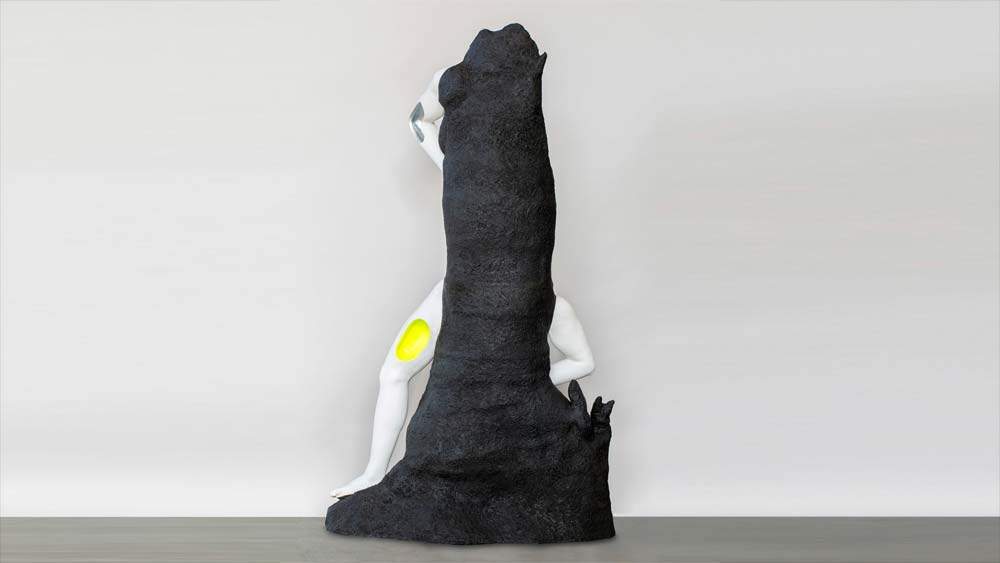For the Faenza Museum of Ceramics, a new section and an exhibition by Salvatore Arancio
The International Museum of Ceramics (MIC) in Faenza is dedicating two exhibition projects to the theme of memory, with openings on November 11 and 12, 2022. The first is 1908-1952. In Memory of a Dream Enterprise and is the installation of a new permanent section of the museum, curated by Valentina Mazzotti, which aims to retrace the events that led to the founding of the Museum and its rapid development up to the dramatic destruction of World War II and the rapid postwar reconstruction with the reopening of the Museum in 1952.
The other is a creative operation by contemporary artist Salvatore Arancio (Catania, 1974), who drew inspiration for the creation of his exhibition We Don’t Find The Pieces They Find Themselves, curated by Irene Biolchini, precisely from this history of the Museum, its wartime devastation and its reconstruction especially from the operation of restoring the works of more than 300 crates of fragments recovered from the 1944 aerial bombings. It is precisely the fragments that guide the exhibition that recounts the birth, development, and rebirth of the Museum, such as Salvatore Arancio’s project.
1908-1952. A Memoir of a Dream Enterprise opens Friday, Nov. 11, at 5 p.m. On the mezzanine, above the classical ceramics room, through restored works, ceramic fragments, archival materials and photographs, the almost titanic feat of the founder and then-director of the International Museum of Ceramics in Faenza Gaetano Ballardini, who, in less than fifty years, found himself twice building a museum collection, is reconstructed. The milestones in this history are: the birth of the museum in 1908, the founding of the magazine “Faenza” in 1913, which is still a reference for ceramic studies today, the establishment of the school in 1916 that later became a state school in 1919, the Permanent Exhibition of Modern Italian Ceramic Art in 1926, the acquisition of important collections such as the donation of the Islamic fragments that belonged to Fredrik Robert Martin in 1930, the final planting of the library and photo library in 1935, and the establishment of the National Competition for Ceramic Art in 1938. Another key passage in the Museum’s history is the wartime devastation, especially following the dramatic bombing on May 13, 1944, which was followed by a rapid response and reconstruction. The legacy of the prewar Museum is perpetuated to this day through the recovery of ceramics from the fund of fragments found in the wartime rubble, thanks to the patient work of our restoration workshop. The most recent example is Jean Renè Gauguin’s sculpture of Adam and Eve at the Danish Bing&Grondahl, the restoration of which was the subject of student Simona Lombardi’s dissertation, coordinated by lecturer Ana Cecilia Hillar, as part of the Bachelor of Arts in Conservation and Restoration of Cultural Heritage at the University of Bologna - Campus d Ravenna, which has been collaborating with MIC for several years.
We Don’t Find The Pieces They Find Themselves, which opens on Nov. 12, at 12 p.m., in the Project Room and the Faenza Ceramics Room, to remain on display until Jan. 8, 2023, aims to address issues related to fragility and memory, while narrating how Italian excellence and “know how” is used to rearrange chaos, giving a second life to works that would otherwise be forever lost or locked away in storage. A choral work in which the individual parts listen to each other and meet.
The exhibition consists of several elements created using the language of video and sculpture, developed during different stages of research and production. Initially, the artist worked on a video, proposing a poetic reinterpretation of the warehouses and restoration workshop, where for years, work has been done to reconstruct the works of the museum’s collection damaged during the wartime bombing. The video consists of images of the places, works, and fragments, along with moments of work, stories, methodology, and stimuli that inspire the restorers.
At a later date, Arancio created a new series of sculptures that will be exhibited in dialogue with the video. The glazed ceramic sculptures, were created by four hands during a series of workshops with the Museum’s restorers, nullifying any hierarchical order between artist and craftsman. Assembling together elements created by different hands, modeled from an imaginative interpretation and linked to the memory of works restored in the past by the workshop. Reversing the usual roles, this time instead it will be the artist who will reassemble together the fragments created by the restorers, giving shape to the sculptures, without prior knowledge of the work that initially inspired the forms of the “fragments.” On the occasion of the exhibition Salvatore Arancio has also created a series of artist’s editions that can be purchased exclusively at the Museum’s bookshop.
The new section was made possible thanks to the support of MiC- General Directorate for Contemporary Creativity, the Emilia-Romagna Region, the Municipality of Faenza, the Union of Romagna Faentina, the BCC- Credito cooperativo ravennate, forlivese e imolese, and with the collaboration of ISIA Faenza students for the graphic design of the exhibition and Andrea Pedna for the multimedia part. Salvatore Arancio’s project was the result of the ministerial call for proposals Cantica 21, which also includes collaboration with MAMbo in Bologna. Following the exhibition at MIC in Faenza, the video and the sculpture We Don’t Find The Pieces They Find Themselves will enter MAMbo’s permanent collection.
Pictured is the sculpture by Salvatore Arancio.
 |
| For the Faenza Museum of Ceramics, a new section and an exhibition by Salvatore Arancio |
Warning: the translation into English of the original Italian article was created using automatic tools. We undertake to review all articles, but we do not guarantee the total absence of inaccuracies in the translation due to the program. You can find the original by clicking on the ITA button. If you find any mistake,please contact us.




























